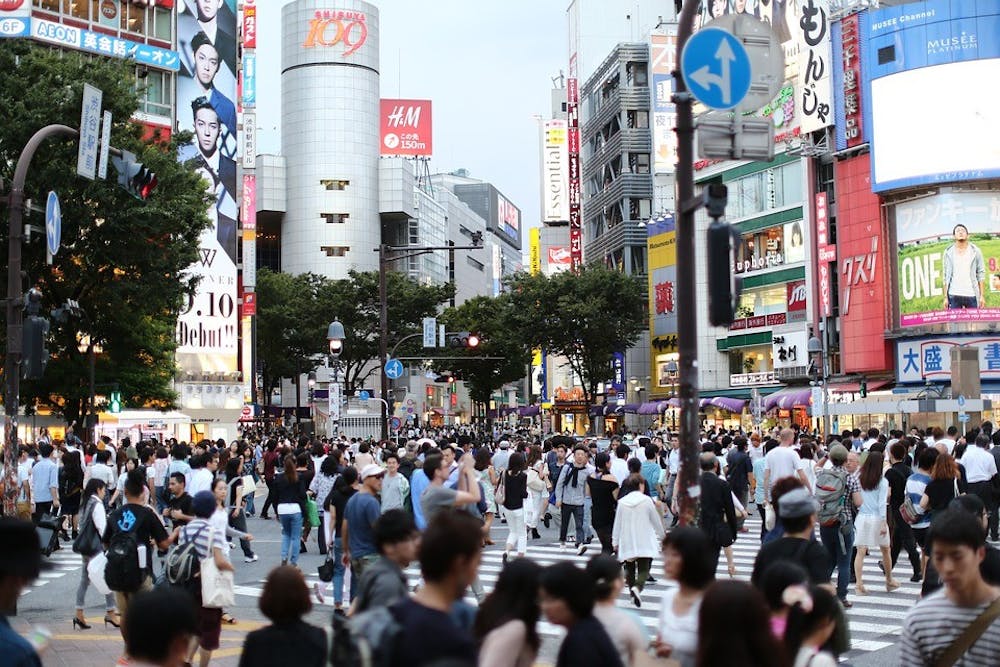“My daughter Hinako’s hair may look lighter than others, but here, I declare that it is her natural hair color.” My mother would sign and stamp this note for my homeroom teacher annually. My teacher approved the note, and it became my “natural hair certificate.” I would carry this certificate with me whenever I was wearing my school uniform. When someone questioned my “different” hair color and accused me of dying it, I could prove my innocence. This started in elementary school and continued until I graduated high school.
In Japan, many schools do not allow hair dye, perms or any unnatural hair treatments. They require students to submit a natural hair certificate if their hair is not black or straight. Some schools even require a baby photo to prove that a child’s hair was naturally different. Leaving aside the question of whether it is right for schools to ban students from dying their hair, to hold black hair as a required standard is evidence of a persistent, if underappreciated, bias. Homogenous appearance matters a great deal in Japan, even as Japanese society grows more heterogeneous.
Few in Japan question the treatment of visible minorities. Japan has been making progress in creating a minority-inclusive society through public policies and laws. Yet when Japanese people think of minorities, many think of invisible minorities who are able to “pass” as Japanese because their physical appearance is similar to that of ethnic Japanese. They are not aware of visible minorities who are residents of Japan but do not look Japanese: people who cannot pass and are perceived to be foreigners.
Naomi Osaka, the top-ranked women’s singles tennis player, brought the concern of visible minorities to the forefront of public concern when she won the U.S. Open in 2018. Osaka is a Japanese citizen, born in Japan to a Japanese mother and a Haitian father.
I was in the U.S. during Osaka’s championship match. It was illuminating to see the public in the U.S. and in Japan focus on different talking points. While the U.S. public debated Serena Williams’ behavior throughout the match, those in Japan were debating whether Osaka was suitable to epitomize Japan. The issue was Osaka’s appearance: Is she a representative of Japan, though she lacks visible “Japanese-ness?”
For centuries, understanding someone as Japanese has required that both parents be Japanese. Children with one Japanese and one non-Japanese parent are called hafu (a Japanese-English term that means “half”). Even if these people have always lived in Japan, the hafu are often not recognized as fully Japanese.
Although its origins are different, this ugly concept of hafu resonates with the historically infamous one-drop rule in the United States. Classifying a child of mixed racial parentage into the socially subordinate parent’s race, called hypodescent, perpetuated the social structures of racism in American society.
Even today, although ideas about blood purity behind the one-drop rule are discredited, one result of hypodescent is that it allows white people to believe they have achieved racial advantage by their own efforts. African Americans or other racial minorities are blamed for a supposed lack of effort while not succeeding in the same ways.
Over 70 years after the Supreme Court ordered American schools to desegregate, traditional racial ideas persist. Many practices of segregation, in terms of housing and educational inequality, remain the same.
These issues are especially notable in Baltimore. The city’s unemployment rate for African Americans is nearly four times higher than it is for whites. Although it is decreasing, the high school dropout rates for African Americans are much higher than for whites. Childhood poverty and overall income remain racially unequal in Baltimore. These accumulated disadvantages result in part from power imbalances that festered beneath the banner of hypodescent.
Today, one in 30 people in Japan are of mixed parentage, not to mention the immigrant and fully non-Japanese population. But rarely do any of these people become international representatives of Japan by becoming politicians or athletes. “Japanese-ness” has taken on the power of racial exclusion, drawing on old ideas about blood or physical purity.
If inherited understandings of what it means to be Japanese continue to value the binary of Japanese versus non-Japanese according to homoethnicity, Japan will be left with major concerns. Promoting awareness of visible minorities, accepting them as Japanese and acknowledging embedded forms of racism in Japan is the first step towards addressing these issues. Similar claims could be made about Baltimore, a city shaped by a history of exclusionary housing laws and a racially disproportionate system of incarceration. Refusing to confront racial inequality because it is the traditional way of doing things is unacceptable.
Now is the time for change in Japan. The new Reiwa era — named with the hope that Japan can allow different cultures to come together — began on May 1. In the near future, the natural hair certificate could become a meaningless piece of paper. Japan can make progress and discard old ideas about how citizens should look. Perhaps hair color will not be a matter of concern. Instead it will be something that people accept as unique to each individual.
“Japanese-ness” must be more than skin-deep. The same concept also applies to the social construction of race in the U.S.
Hinako Yasui is a junior studying International Relations. She is an exchange student from Waseda University in Japan.





